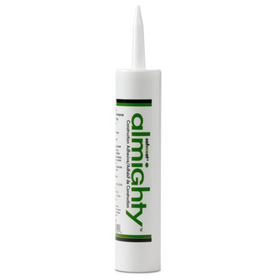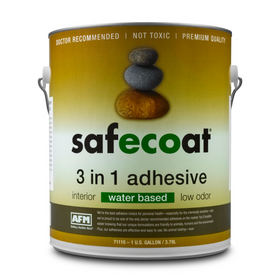
Building Your Own Storage Shed
Last Updated: Apr 9, 2025With spring already in full bloom in most areas around the country, now is the perfect time to start building that storage shed that has long been on your "to-do" list. Even if you are not an expert in construction and have difficulty distinguishing between a screw and a nail, building a small storage shed is an entirely feasible DIY home project. Pre-built storage sheds can be purchased from most significant construction and hardware stores. However, you should expect to pay anywhere between $2,000 and $4,000 for a 10-foot by 10-foot shed. Hiring a contractor to make a custom shed will most likely be even more expensive. Suppose your basement or garage routinely ends up as a makeshift storage spot for garden tools, wheelbarrows, and snow shovels. In that case, the following guide offers a concise but complete introduction to how to build your backyard storage shed.
Table of Contents
- What Are the Benefits of Building Your Storage Shed?
- What Materials Should I Use?
- What Is the Easiest Type of Storage Shed to Build?
- Where Can I Find Storage Shed DIY Designs?
- Step by Step Instructions on Building Your Storage Shed
- How Much Dies It Cost to Build a Shed?
- How Much do Storage Shed Kits Cost?
- What Are Some of the Most Durable Brands of Kits?
- What Storage Shed Kits Are the Easiest to Assemble/Require the Least Tools?

What Are the Benefits of Building Your Storage Shed?
Deciding to build your storage shed will save you money and give you a project to stay busy during the current lockdown for COVID-19. It is also an opportunity to create a unique, creative, and functional element to your lawn. The storage sheds commonly sold at Home Depot, Lowes, and other hardware stores are generally not the most aesthetically pleasing structures. Despite their functionality, most homeowners probably try to hide them in an obscure corner of their backyard. A functional structure, however, doesn't necessarily have to be unsightly. For a bit of inspiration, check out these beautiful, homemade storage shed ideas on Pinterest.
It is also important to point out that homeowners will not need any building permit to build their backyard shed in most areas of the country. Though building codes differ from region to region, sheds that are smaller than 100 square feet (10-foot by 10-foot, for example) can be self-built without needing to apply for a permit. Also, many municipalities will waive the need for a building permit if the shed is located in the backyard, does not require an electricity or water hookup, and if its square footage footprint does not exceed a certain percentage of the total lot size. To avoid any penalties, fines, or tear down the shed, it is best to contact your local government to inquire about the local building code.

A small storage shed can also offer other tangible benefits for your home and surrounding yard design. One of the most critical permaculture principles is: "each element performs many functions." The essential function of a storage shed is to put in safekeeping your tools and other belongings. However, the type of storage shed you build and where you locate it in your yard can allow it to serve as many functions as possible. For example, a south-facing storage shed might be a great place to put a few solar panels to offer clean, renewable energy for your home, especially if the roof on your home is not optimally oriented or is covered by shade. You might also be able to collect the rainwater from your storage shed to either feed a rain garden or to receive more water for your household cistern. When carefully designed, the DIY storage shed ideas that we explore below can be an integral part of a holistic and sustainable landscape design.
What Materials Should I Use?
The materials you use will depend on the type of shed you choose to build. Below, we explain the materials required and look at the pros and cons of the three most common types of storage sheds that can be self-built.
Stick Frame Storage Sheds
The most common type of homeowner-built storage shed is made from 2x4s, plywood sheathing, and some exterior cladding. Due to the relatively lightweight nature of this structure, the only foundation that the shed will need will be 4 to 6 precast concrete deck blocks (depending on the size of the shed you are planning to build). Floor joists are subsequently connected to the deck blocks to offer a base for the rest of the structure. This type of shed is relatively quick to build, and several purchasable kits explain how to build a stick frame storage shed. On the downside, this type of storage shed could be prone to moisture and insect damage if not correctly constructed.
Wattle and Daub Storage Sheds
This earthen building technique is an excellent option for a creative, natural, and environmentally-friendly storage shed. Vertical posts are cemented into the ground to offer the structural strength of the shed. A horizontal latticework (the wattle) connects the posts and cob, a mixture of clay, sand, and straw that is mixed by foot) fills in the spaces between the lattice. The result is a robust earthen structure that can be finished with earthen or lime plasters. On the downside, this building technique is relatively labor-intensive.
Metal Storage Sheds
An all-metal storage shed can also be made from steel or aluminum posts, joists, and sheathing. This structure will be incredibly durable, though you will most likely have experience welding and accessing a welding machine.
What Is the Easiest Type of Storage Shed to Build?
The most accessible storage shed to build will largely depend on your DIY skills and the kind of structure you want to develop. In general, stick frame sheds are perhaps the easiest to make. They only require a minimum amount of tools (hammer, nails, drill, and a saw). There are also detailed plans that can be purchased or found online to help novice builders throughout the construction process. Wattle and daub structures are a bit more labor-intensive. However, the process of building with the earth is incredibly flexible and forgiving. It is often a valuable technique for people new to natural building.

Where Can I Find Storage Shed DIY Designs?
There are dozens of websites offering different DIY storage shed designs. Two of the best sites, in our opinion, are:
- Ryan's Shed Plans: This website provides an enormous variety of shed building plans, and they claim to give you access to over 12,000 plans when you purchase their downloadable product. The plans come with step-by-step instructions and 3-D and CAD drawings and diagrams to make it easier for novices to follow along. The download currently only costs $37 and will give you the resources you need to get started building your stick frame shed.
- Max's Wood Working: This website similarly offers a $37 download that will give you access to over 16,000 woodworking plans. While these plans aren't just for sheds, there is a large shed section. You can also use this resource for building your patio furniture, carport, and everything in between.

Step by Step Instructions on Building Your Storage Shed
If you are ready to start building your stick frame shed but don't want to sift through thousands of detailed plans with architectural drawings, below, we offer a simple step-by-step process for a simple self-build.
- Purchase precast concrete deck blocks.
- Cement them into place, where you plan to position your shed.
- On top of the deck blocks, connect the 2x4 or 4x4 floor posts and floor joists.
- On top of the joists, lay your floor decking with at least 3/4 inch plywood. For outdoor sheds, it's best to purchase pressure-treated plywood to avoid rotting.
- Lay a 2x4 or 4x4 bottom plate over the flooring and connect the 2x4 studs at a distance of between 18 and 24 inches.
- Frame the door and any windows you plan to have in the shed with 2x4s as well.
- Secure the top plate to the 2x4 studs.
- At a maximum distance of 24 inches, place the 2x4 rafters connected with rafter hardware (usually metal plates). Also, place the rafter blocking on top of the top plate.
- When the 2x4 structure is complete, add wall and roof sheathing, metal or asphalt shingle roofing, and the cladding of your choice.
- Finish by installing the door and windows.
How Much Dies It Cost to Build a Shed?
The overall price for a self-built storage shed will depend on the size of your shed and the quality of materials you use. For example, cheap plywood sheets might save you a couple of bucks. However, there is a risk for formaldehyde VOC emissions, especially if the storage shed is not ventilated with a window. Opting for VOC-free bamboo plywood might cost a bit more, but will add a unique, sustainable, health-enhancing touch to your shed. In general, however, homeowners should expect to spend between $500 and $1,500 in materials for their shed.
How Much do Storage Shed Kits Cost?
If you feel like sourcing and purchasing all the necessary materials might be over your head, there are many storage shed kits that can be purchased. These kits come with complete building plans, and all of the pre-cut lumber and materials you will need for assembly. However, these kits are a bit more expensive, with the average price somewhere between $2,000 and $5,000.

What Are Some of the Most Durable Brands of Kits?
One of the most durable brands for storage shed kits is Best Barns Woodville. This company offers between a 15 and 50-year warranty on the different types of sheds they sell. They also use quality, pre-cut lumber and include trusses and hurricane hangers to help the shed resist winds of up to 140 mph. At Home Depot, these kits range in price from $3,000 to $5,000.

What Storage Shed Kits Are the Easiest to Assemble/Require the Least Tools?
Keter Fusion is another company offering easy-to-assemble storage shed kits made from a combination of wood and plastic. These sheds are extremely easy to assemble and a good option for homeowners wanting a durable shed that resists the elements. These kits range in price from $550 for a small 6 x 8 ft shed to around $1650 for 7.5 x 11 ft options.
Tobias Roberts
Tobias runs an agroecology farm and a natural building collective in the mountains of El Salvador. He specializes in earthen construction methods and uses permaculture design methods to integrate structures into the sustainability of the landscape.










